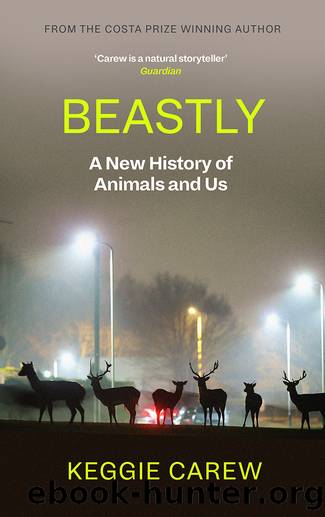Beastly by Keggie Carew

Author:Keggie Carew
Language: eng
Format: epub
Publisher: Canongate Books Ltd
VIPs
âAll predators must be culled and the otter is no exceptionâ, so a member of the Eastern Counties Otter Hounds told Philip Wayre (founder of the Otter Trust) in 1976.127 In the first half of the twentieth century otters had played under Londonâs Westminster Bridge. By the close of the 1970s they had gone (DDT, polluted rivers, roads, draining, water bailiffs, hunting). The Otter Trust, founded in 1971, together with Angela King of Friends of the Earth, campaigned tirelessly for the otter to be legally protected. Otter surveys were based on presence and absence, indicated from spraints and footprints (nowadays we have camera traps). It took an almost total absence before the government was moved to help. Otter-hunting was finally banned and the otter protected under the Wildlife and Countryside Act in 1981. By 1996 the Otter Trust had bred and released 130 otters into the wild, but it took three decades â otters do not reproduce quickly â and hardworking river restoration volunteers for this magnificent native animal to come back. So it is galling to see, in 2021, the toxic waste of industrial agriculture â from the proliferation of intensive poultry units â being allowed to pollute and suffocate the life out of British rivers once again.
The energy-flow through ecosystems dictates there are always fewer predators than prey. Predators suffer high mortality in early life; prey are fleeter, safer in numbers, camouflaged; or, like a gazelle, spring into the air on all four feet (called pronking) to say, Forget it, Iâve seen you. Vilified as vermin, as if they are doing something bad, the belief is that native predators are to blame for the loss of bird life, game or livestock, and that killing them is the solution. But the presence of apex predators like goshawks keep the middle-order predators in check, by both catching them as prey and by creating a landscape of fear. Farmland bird decline is the result of changing farming practices, lost habitat, lost food and nesting sites, hedge flailing, tsunamis of insecticides, etc. A fox population is self-regulating; it remains more or less static if let be. Continue to kill foxes, as gamekeepers do, and the survivors will breed earlier and more prolifically; young, dispersing foxes will fill a vacancy and by inexperience can exacerbate conflict with humans, where an established fox will have learnt to avoid danger areas, like the hen coop. Until of course there is a localised extinction, a good thing in the view of the shooting community, but not for an ecosystem where rats and rabbits have no predator, and poisoned animals poison other animals, where functioning communities have broken, where pressure for food is exacerbated by huge numbers of introduced game species â astonishingly 60 million intensively reared, non-native pheasants are released without licence in Britain every autumn for sport, who will help themselves to the hard-pressed wildlife: young snakes, slowworms, amphibians. Grain hoppers put out to supplement their food support the explosion of rats. And so it continues.
Download
This site does not store any files on its server. We only index and link to content provided by other sites. Please contact the content providers to delete copyright contents if any and email us, we'll remove relevant links or contents immediately.
Sapiens: A Brief History of Humankind by Yuval Noah Harari(14311)
The Tidewater Tales by John Barth(12625)
Mastermind: How to Think Like Sherlock Holmes by Maria Konnikova(7274)
Do No Harm Stories of Life, Death and Brain Surgery by Henry Marsh(6904)
The Thirst by Nesbo Jo(6877)
Why We Sleep: Unlocking the Power of Sleep and Dreams by Matthew Walker(6651)
Life 3.0: Being Human in the Age of Artificial Intelligence by Tegmark Max(5506)
Sapiens by Yuval Noah Harari(5321)
The Longevity Diet by Valter Longo(5039)
The Body: A Guide for Occupants by Bill Bryson(5026)
The Rules Do Not Apply by Ariel Levy(4907)
The Immortal Life of Henrietta Lacks by Rebecca Skloot(4547)
Animal Frequency by Melissa Alvarez(4424)
Why We Sleep by Matthew Walker(4394)
The Hacking of the American Mind by Robert H. Lustig(4336)
Yoga Anatomy by Kaminoff Leslie(4331)
All Creatures Great and Small by James Herriot(4267)
Double Down (Diary of a Wimpy Kid Book 11) by Jeff Kinney(4239)
Embedded Programming with Modern C++ Cookbook by Igor Viarheichyk(4137)
